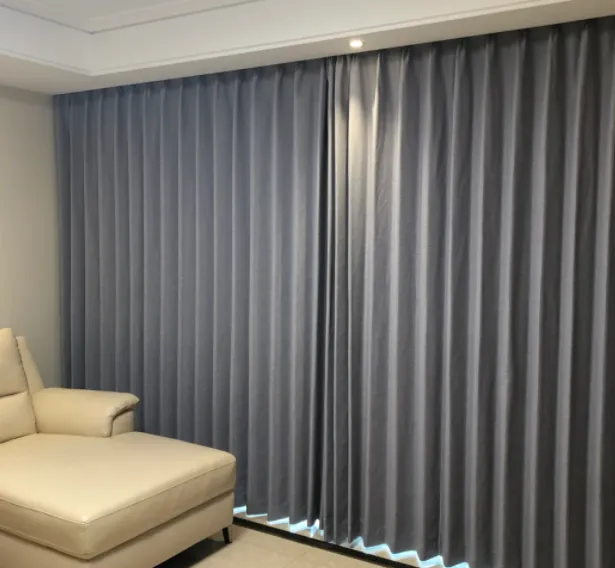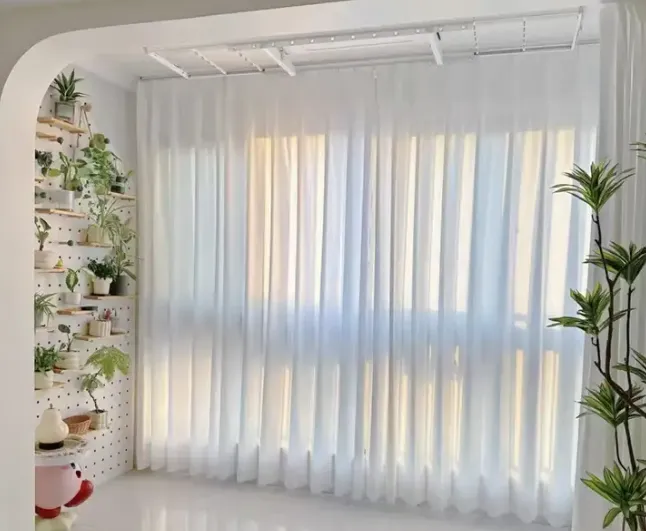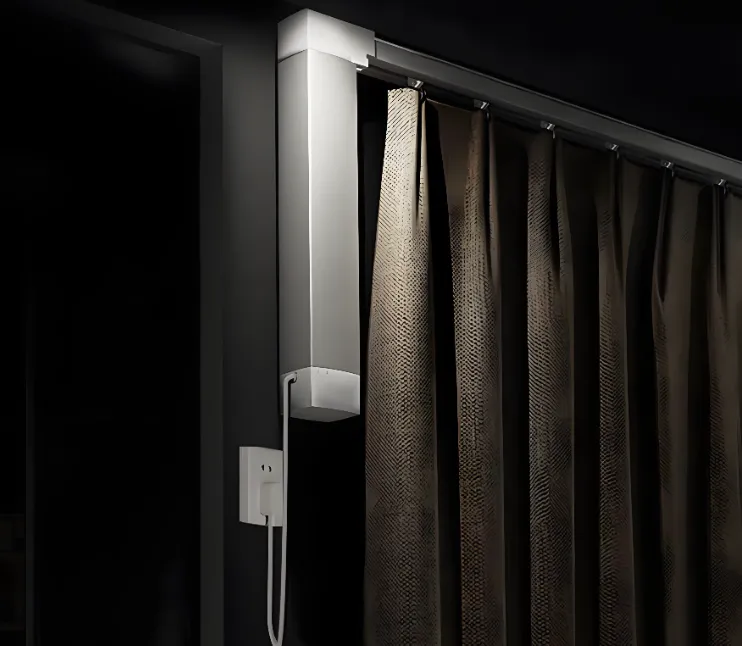Thermal insulated curtains have transcended their traditional role as window coverings to emerge as a high-performance solution for energy efficiency, indoor comfort, and environmental sustainability. In residential, commercial, and hospitality settings—from urban apartments and suburban homes to hotels, offices, and educational institutions—these curtains directly address a critical challenge: window-related heat transfer. Windows are a primary source of energy loss in cold climates (accounting for 25-30% of residential heating energy use, per industry research) and unwanted heat gain in warm regions, making thermal insulated curtains a cost-effective investment for both end-users and businesses. Beyond energy savings, they also enhance acoustic comfort by reducing external noise and offer design flexibility to complement diverse interior aesthetics, solidifying their position as a versatile product for global markets.

Thermal insulated curtains are engineered with distinct designs to cater to varying climate conditions, usage patterns, and performance requirements. Two primary configurations dominate the market, each offering unique advantages for specific scenarios.
The single-layer structure is the most widely used design for everyday thermal insulation needs. At its core, it features a lightweight yet dense polypropylene padding—typically 80 grams per square meter (gsm)—sandwiched between two outer fabric layers. Common outer materials include brushed polyester (for a soft, tactile finish) and polyester taffeta (for a smooth, crisp appearance). This sandwich construction creates a thermal barrier that blocks cold drafts in winter and minimizes heat penetration in summer, while maintaining a manageable weight for easy installation and operation.
Key benefits of this design include:
- Cost-effectiveness: Ideal for price-sensitive markets or large-scale installations (e.g., apartment complexes).
- Space efficiency: Slim profile fits well in rooms with limited wall or window space.
- Added acoustic value: The polypropylene padding absorbs mid-range noise, reducing disturbances from traffic, neighbors, or public spaces.
- Low maintenance: Most single-layer options are machine-washable, with the polypropylene padding retaining its shape and insulation properties after repeated laundering.
This design is particularly popular in residential settings, student dormitories, and budget-friendly commercial projects where balancing performance and affordability is a priority.
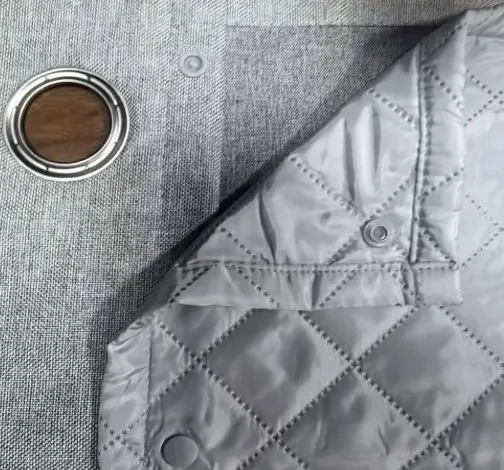
For regions with extreme seasonal temperature fluctuations—such as temperate zones where winters are cold and summers are hot—the detachable double-layer design offers unmatched flexibility. This configuration pairs a single-layer thermal insulated curtain (as the inner core) with a removable outer fabric layer, connected via durable snap buttons, hook-and-loop fasteners, or magnetic strips.
The outer layer is typically crafted from materials like faux linen (for a natural, rustic aesthetic), plain-weave polyester (for durability), or even lightweight cotton blends (for breathability). In colder months, the combined layers create a robust thermal barrier, maximizing heat retention and minimizing energy consumption for heating systems. During warmer seasons, the outer layer can be easily removed, leaving the lighter single-layer curtain to block excess sunlight and moderate indoor temperatures without trapping heat.
This design appeals to:
- Markets with four distinct seasons: Reduces the need for separate winter and summer window treatments.
- Hospitality and short-term rentals: Allows property managers to adjust curtains based on guest preferences and seasonal needs.
- Eco-conscious buyers: Supports year-round energy savings by adapting to changing weather conditions without additional product purchases.
The performance and aesthetic appeal of thermal insulated curtains are heavily influenced by fabric choice and heading design. These elements allow buyers to tailor products to specific market segments, from luxury residential to high-traffic commercial spaces.
Fabric selection balances insulation efficiency, durability, texture, and visual appeal. Below are the most in-demand materials and their key characteristics:
- Brushed Polyester: Features a soft, velvety texture that adds warmth to interiors. Its dense weave enhances thermal retention, while the brushed surface traps air (a natural insulator) to boost performance. Ideal for bedrooms, living rooms, and nurseries where comfort and coziness are priorities.
- Polyester Taffeta: A smooth, lightweight fabric with a subtle sheen. It is highly durable, resistant to wrinkles and fading, and offers excellent light-blocking capabilities when paired with polypropylene padding. Suitable for hotels, offices, and formal spaces where a polished, low-maintenance look is desired.
- Faux Linen: Mimics the natural texture and elegance of linen without the latter’s tendency to wrinkle or shrink. It is breathable, durable, and blends seamlessly with modern, Scandinavian, or rustic interior styles. Popular in boutique hotels, upscale apartments, and residential projects.
- Plain-Weave Polyester: A versatile, cost-effective option with a tight weave that enhances thermal performance. It is resistant to stains and wear, making it suitable for high-traffic areas like waiting rooms, classrooms, and commercial lobbies.
Heading styles determine how curtains attach to rods or tracks, impacting both installation ease and aesthetic cohesion. The most common options include:
- Grommet (Eyelet): Circular metal or plastic rings integrated into the top of the curtain. They slide smoothly along rods, making operation easy, and create a modern, streamlined look. Ideal for residential and commercial spaces where quick, frequent adjustments are needed.
- Rod Pocket: A sewn-in pocket at the top of the curtain that slides directly over a rod. This style offers a clean, traditional appearance and is simple to install, making it popular for apartments and budget-friendly projects.
- Velcro Tops: Features hook-and-loop fasteners for secure attachment to rods or tracks. It ensures a tight fit (minimizing gaps for heat transfer) and is easy to remove for cleaning. Suitable for healthcare facilities, schools, or spaces requiring frequent laundering.
- Hooks and Pinch Pleats: Pleated headers attached to hooks that connect to curtain tracks or rods. This style creates a formal, elegant look and allows for precise adjustment of curtain fullness. Common in hotels, ballrooms, and luxury homes.
Tab Tops: Fabric loops (tabs) sewn into the top of the curtain that slide over rods. They offer a casual, relaxed aesthetic and are ideal for bedrooms, kitchens, and informal living spaces.
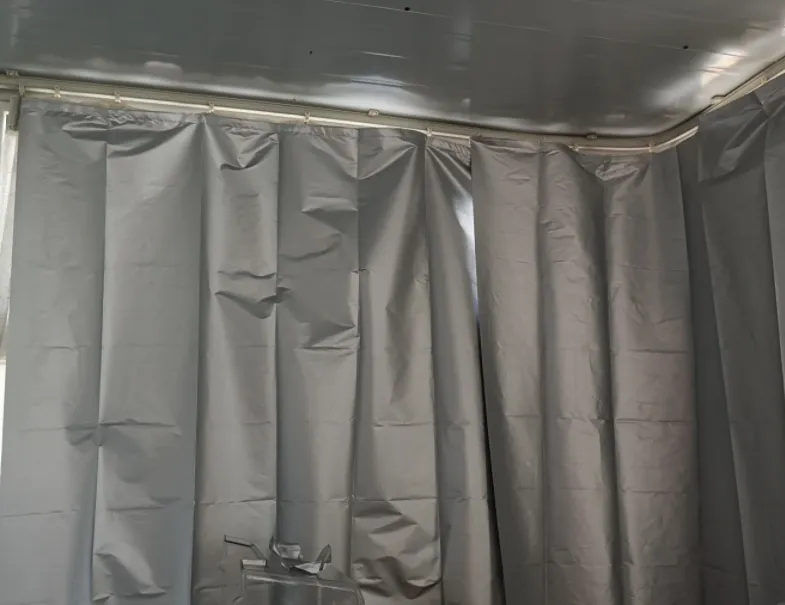
To meet the diverse needs of global markets, thermal insulated curtain suppliers offer comprehensive customization options, enabling wholesale buyers, retailers, and project managers to align products with local preferences, building specifications, and target demographics. Key customization capabilities include:

Thermal insulated curtains exhibit strong demand across regions, driven by climate conditions, energy costs, and consumer preferences. Below is a breakdown of key market dynamics:
- Europe and North America: Cold winters and high heating costs drive robust demand for thermal insulated curtains, particularly in Northern Europe (e.g., Sweden, Germany) and Canada. Consumers and businesses prioritize products with high energy efficiency ratings (e.g., U-value reduction) and compliance with local sustainability standards (e.g., EU’s Energy Performance of Buildings Directive). Faux linen and brushed polyester fabrics are popular for their aesthetic alignment with European and North American interior trends.
- Middle East and Southeast Asia: Hot, arid or humid climates focus on heat blocking to reduce air conditioning energy use. Light-colored, breathable fabrics (e.g., plain-weave polyester, light faux linen) are preferred to reflect sunlight, while durable, stain-resistant materials stand up to high humidity. Commercial projects—such as hotels, malls, and office towers—are major buyers, as they seek to lower long-term operational costs.
- East Asia (China, Japan, South Korea): Urbanization and a growing focus on residential comfort drive demand for both single-layer and double-layer designs. In densely populated cities (e.g., Shanghai, Tokyo), acoustic insulation is an added priority, making polypropylene-padded curtains popular. Minimalist designs (e.g., neutral-colored taffeta) align with contemporary East Asian interior styles.
Hospitality and Commercial Sectors (Global): Hotels, resorts, and office buildings worldwide prioritize thermal insulated curtains to enhance guest/employee comfort and reduce energy bills. Detachable double-layer designs are favored for their versatility, while custom colors and branding (e.g., hotel logos on tie-backs) help maintain brand consistency.

Thermal insulated curtains represent a fusion of functionality, sustainability, and design—making them a high-value product category for wholesale buyers and project stakeholders. Their ability to reduce energy consumption, enhance indoor comfort, and adapt to diverse climates and aesthetic preferences addresses global trends toward sustainability and user-centric design.
Whether tailored to cold European winters, hot Middle Eastern summers, or the variable seasons of temperate zones, these curtains offer a flexible solution that balances performance and style. With comprehensive customization options—from fabric and size to heading styles and finishing details—they can be aligned with the unique needs of any market, ensuring broad appeal and long-term demand.
For wholesale buyers, thermal insulated curtains are more than a product; they are a solution that resonates with end-users’ desire for comfort, cost savings, and sustainability—positions that will remain relevant as global focus on energy efficiency and environmental responsibility continues to grow.





